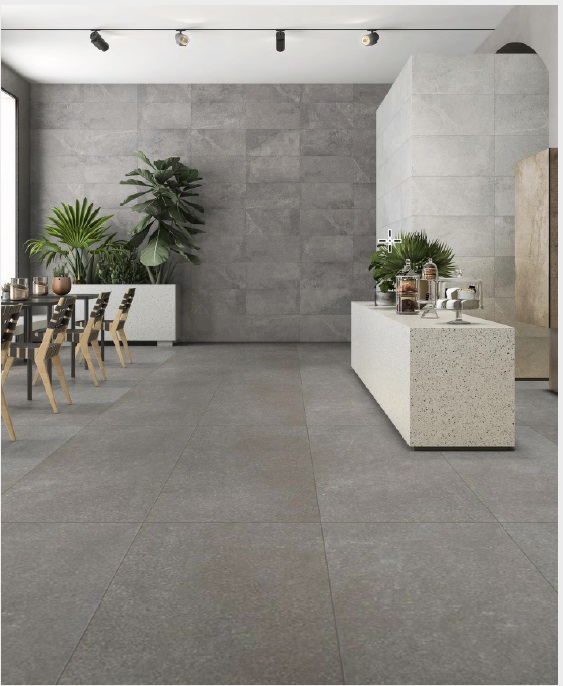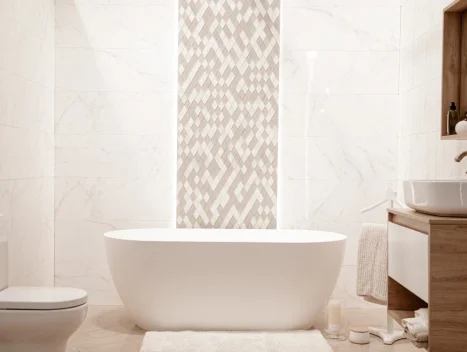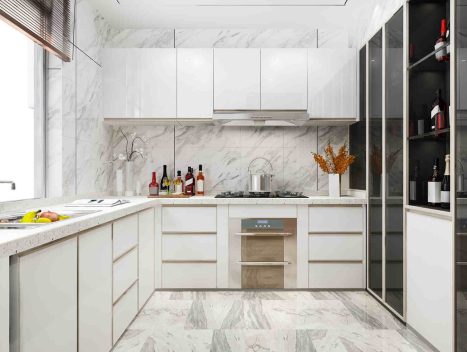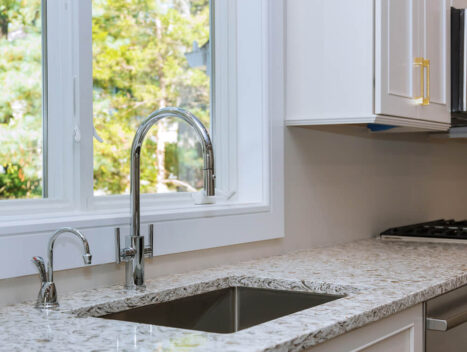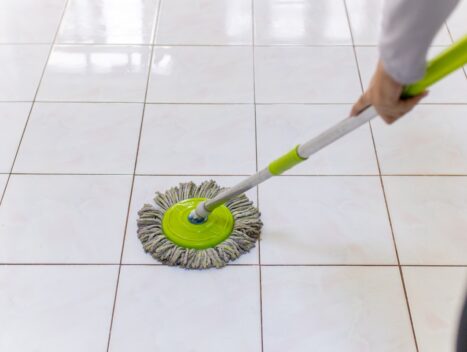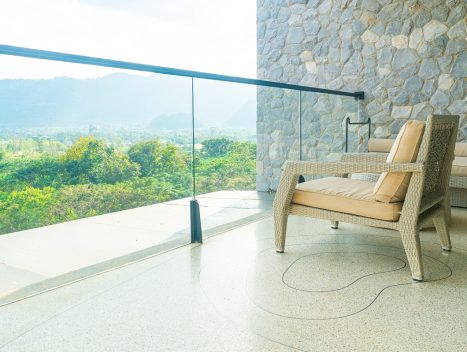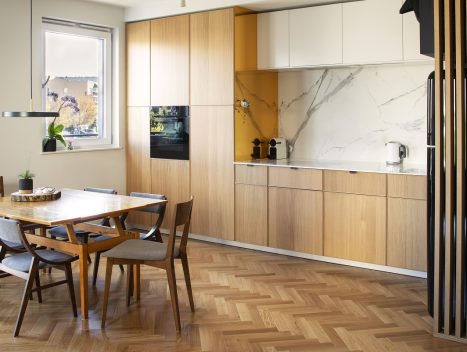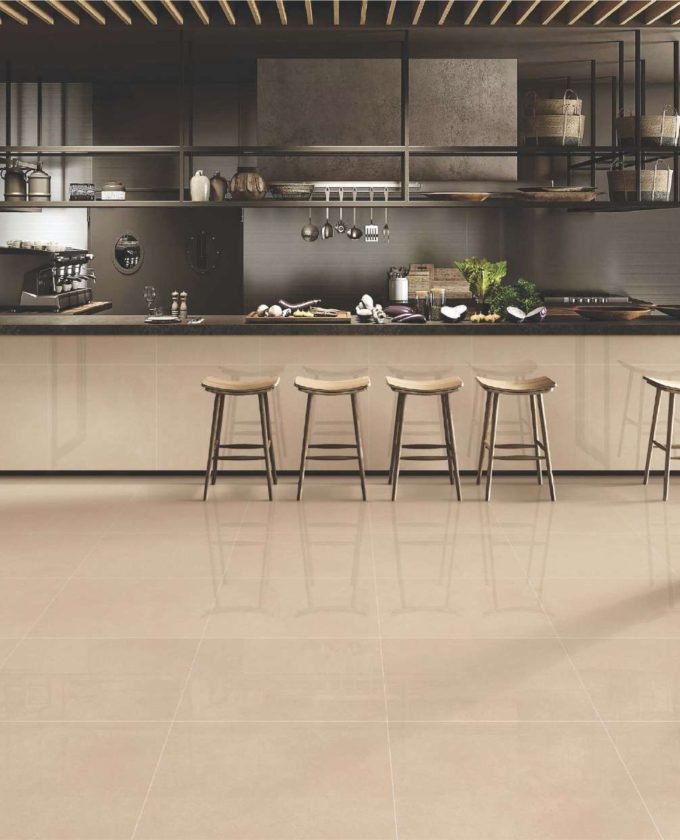
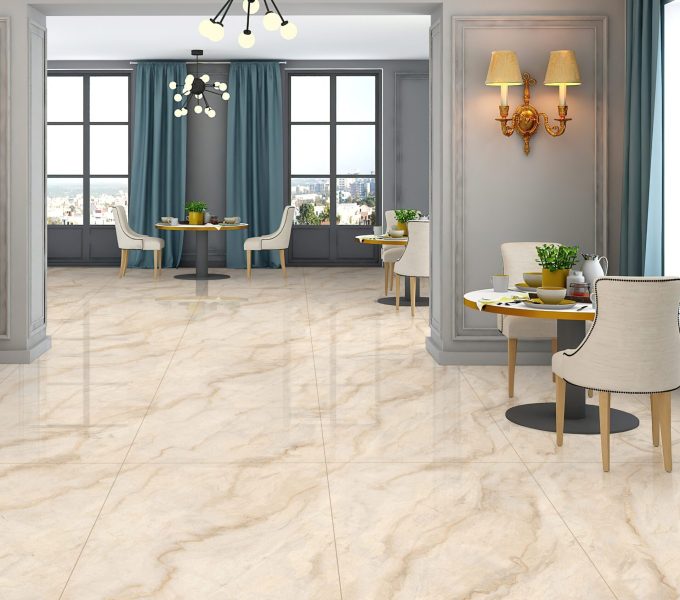
Asked Questions ?
What is the difference between ceramic and porcelain?
Ceramic and porcelain are both made from clay, but they are different in terms of their composition, firing temperature, and properties. Ceramic is a general term for a material made from clay and other minerals that have been fired at high temperatures. Ceramics can be porous or non-porous, and they can be used to make a wide variety of objects, including tiles, dishes, figurines, and jewelry. Porcelain is a type of ceramic that is made from a special type of clay that is fired at very high temperatures (1,200-1,400 degrees Celsius). This makes porcelain very dense and non-porous, which gives it a number of desirable properties, such as strength, durability, and resistance to staining and chipping.
What types of finishes exist?
The finish refers to the upper surface of the tile’s coating and can be polished, shiny, satin, matte, or natural.
Is ceramic tile a durable material?
Ceramic tile is a durable material that can last for many years. It is made from clay and other minerals that are fired at high temperatures, making it strong and resistant to wear and tear. Ceramic tiles are also non-porous, which means that they are resistant to water and moisture damage. However, the durability of ceramic tile also depends on the quality of the installation. If the tiles are not installed properly, they may be more susceptible to cracking, chipping, and other damage. It is important to follow the manufacturer’s instructions carefully when installing ceramic tile to ensure its long-term durability. Overall, ceramic tile is a durable material that can last for many years with proper care and maintenance.
What is a rectified tile?
A rectified tile is a ceramic or porcelain tile that has been precisely cut after firing to ensure uniform size and sharp edges. This process allows for tighter grout lines and a sleek appearance in installations.
How do I calculate the number of tiles I need?
To calculate the number of tiles needed, measure the length and width of the area to be tiled. Multiply these dimensions to find the total square footage. Then, divide this by the area of a single tile to determine the number of tiles required. Always add extra tiles for waste and spares. It’s advisable to consult the tile manufacturer or supplier for specific product recommendations and to account for any irregularities in the space.
Can floor tiles be installed on walls? Or wall tiles on floors?
In general, floor tiles can be installed on walls, but wall tiles are not suitable for floors due to their usually thinner and less durable construction. Floor tiles are designed to withstand foot traffic and heavier loads, making them suitable for both floors and walls. However, wall tiles lack the necessary strength and thickness to handle the stresses of floor use, so they should not be used for flooring applications.
Can I install tiles on top of other tiles?
Yes, it is possible to install new tiles over existing tiles. However, proper surface preparation is crucial. Ensure the old tiles are clean, dry, and in good condition. Remove any loose or damaged tiles and clean the surface thoroughly. Use an appropriate thinset adhesive to bond the new tiles to the old ones. Keep in mind that the added layer may raise the floor level, so check door clearances and transitions to adjacent rooms.
Are ceramic tiles non-slip?
Ceramic tiles can vary in slip resistance depending on their surface texture and finish. Some ceramic tiles have a smooth glaze, which may become slippery, especially when wet. To improve slip resistance, textured or matte-finished ceramic tiles are preferred, as they provide better traction. When selecting ceramic tiles for areas prone to moisture, such as bathrooms or kitchens, it’s essential to choose ones with a slip-resistant rating to enhance safety and prevent accidents.
Is it possible to paint on tiles?
Yes, it is possible to paint on tiles. However, for best results, it’s essential to use the right type of paint designed for tiles, such as epoxy or tile paint. Proper surface preparation and cleaning are crucial to ensure adhesion. Once painted, the tiles should be sealed with a clear coat for protection. Keep in mind that painted tiles may not be as durable as traditional glazed tiles and may require periodic touch-ups.
Frequently asked questions about glazed vitrified tiles
What Are Glazed Vitrified Tiles?
Glazed vitrified tiles have a glossy surface and come in a wide range of designs, finishes, and textures, including wood, bamboo, slate, and stone. Though traditionally expensive, the introduction of digital printing techniques is gradually reducing the cost.
How Glazed Vitrified Tiles Made?
Glazed vitrified tiles are crafted by hydraulic pressing a blend of clay, quartz, feldspar, and silica to form vitreous surfaces, resulting in a dense and hard structure with minimal porosity. Various clay mixtures achieve vitrification at distinct temperatures.
How Much Does Glazed Vitrified Tiles Cost?
The cost of glazed vitrified tiles is influenced by several factors like quality, size, pattern, finish, order quantity, and raw material prices. Customization may incur additional expenses.
How Durable Are Glazed Vitrified Tiles?
Among the various tile options in the market, glazed vitrified tiles stand out as a durable choice. This has made them a popular and preferred tiling option for homeowners. Additionally, their ease of installation adds to their appeal.
What Are The Qualities of Glazed Vitrified Tiles?
It is crucial to recognize that glazed vitrified tiles boast exceptional quality and a commitment to high standards. Each tile undergoes meticulous inspection before being packaged and sold. Manufacturers also ensure consistent size, finish, thickness, and shades across all tiles. Homeowners seeking a natural look can opt for shades resembling natural materials.
